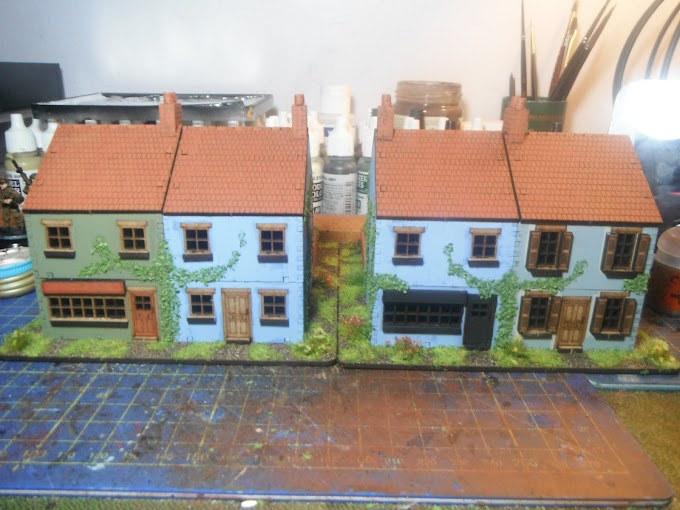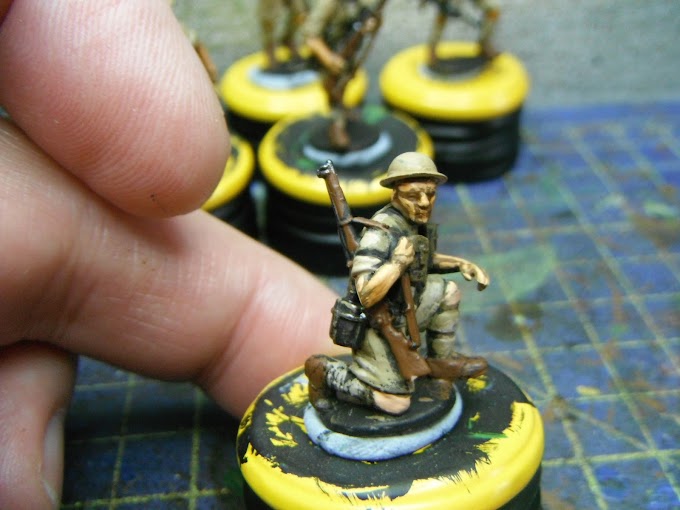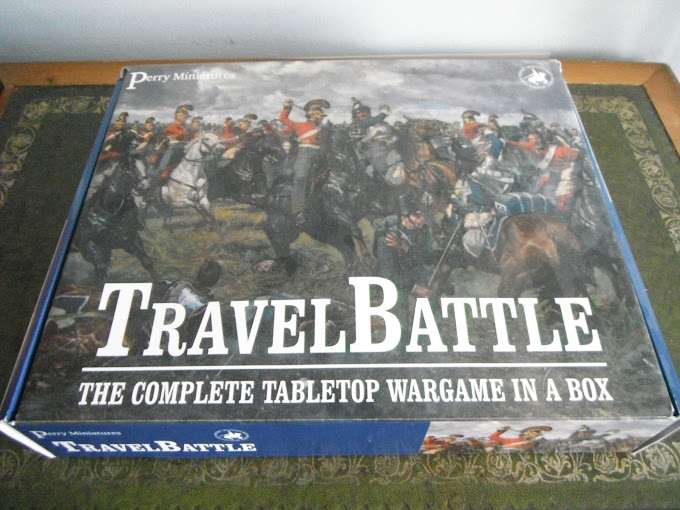 |
| Somewhere between these three publications lies my ideal wargame. |
I have been doing an awful lot of thinking and mental planning recently with regards to how I want to be able to use my 40mm Napoleonics. I needed to get a few ideas 'down on paper' and out of my head, in order to be able to see where I am with this. So this post will probably consist of numerous bullet pointed notes that will hopefully come together to assist me in better understanding the shape and form and type of wargame I want to be able to enjoy, and I invite comments and suggestions of course.
1. Grid or no grid? So this is the starting point for me, and believe me when I say it's been buzzing round my head for weeks now as I weigh up the pro's and con's of both. My instinct is to go with a grid based game using a very subtle 6" square grid, indeed I would like the challenge of doing this and I think a lot about how I could make this look as conventional as possible. Grids just work for me, when I place a unit within a grid it instantly defines the ground occupied, the type of terrain, the movement options available and the range bands for shooting. I don't have to worry about the finer points of facings or formations too much, my unit can be assumed to be doing all that, but the important thing is that it sits within that grid and everything else is obvious at a glance. Units can be placed in formation that best suits the nationality and training of the troop type, in my case columns for the French and line for the British. I am adamant that I will not go back to hexes again for three main reasons, firstly I have done it too many times before, secondly because it's sodding hard work marking them all out, and thirdly because I'm looking to achieve a grid based game that will feature conventional terrain features such as rounded hills, roads and rivers that can be laid straight across the table, square or rectangular fields and such like. I have in mind Bob C's Portable Wargames rules with the addition of a dice driven random activation system along the lines of Bolt Action where the advantage can potentially be with one side for a few moves before it swings back again which I always found great fun. I'm also keen to avoid the 'you go, I go' thing where all units of one side are moved together, fire, melee etc.
2. How many model soldiers can fit in the grid square and what do they represent? This one has been going round and round my brain almost to the point of torment! I think I now have it nailed however, I'll try to explain. Let's say I want to deploy x number of model soldiers within a 6" grid, there has to be space to represent the terrain type that area represents, so the units need to be fairly small, and 12 x 40mm figures allows for this. I can place 12 British infantry in two ranks, or 12 French infantry in a column of 3 ranks. Now, I am mentally unable to see those 12 figures as representing anything but a single company, they simply wont do as a regiment, brigade or division etc, it works for others I know, but for me it's an infantry company or a troop in the case of 4 cavalry. The next stage is to deploy several companies representing larger formations, so my 12 British infantry based on 120mm frontage can be formed up alongside other companies forming a realistic long firing line, with only a 30mm space between the companies, this really don't look bad at all on the table and the French columns look equally good to my eye as allowing space to deploy into line, although of course this is not relevant to my game. Table size I have decided to use is 5' wide by 6' long which equates to a 10 x 12 grid of 6" squares.
3. Nice flags, musicians and mounted officers. 12 infantry figures representing a company does not allow for lots of flags and officers etc, they would look silly and unrealistic, but of course we all like to see a few on the table don't we? Again I have agonised over this and finally come to the conclusion that I can create command stands representing 'officers', not too big but large enough to accommodate 1 mounted officer, standard bearers and the odd character etc. I think nice round bases maybe 60mm will do as they will need to fit within a square with a unit when they choose to attach and give the morale advantage (ignoring retreats) etc. 60mm is just about workable and will look very pretty I think.
4. What about cavalry and artillery? At the moment my 2 cavalry units (French 2nd Hussars and British 16th Light Dragoons) are each of 16 figures, and in 40mm they are huge! To sit in a 150mm grid square I have to break them down into troops of 4 figures, no choice in that given the size of the bases. I can live with this, especially when 2 such are deployed beside each other. As for the guns, they have to represent a single piece at this level and again I have no problem with that. I will only ever be fighting small scale, low level actions I know, but in 40mm I'm more than happy with that, I just want to push my lovely toy soldiers around the table.
I'll leave it there for now, but will next try to explain in more depth my ideas for the actual rules as outlined above. I'm hoping that Bob C's next book 'The Napoleonic Portable Wargame will expand upon the original rules - I have a hardback copy of 'The Portable Wargame - and address the issue of cavalry charging formed squares and the reaction of the infantry in such cases, most certainly Commands and Colours does this very well and it's something I would like to incorporate into my games, which will be set in Spain around 1810 - 1811.










0 Comments